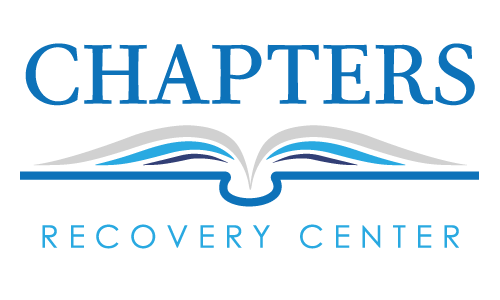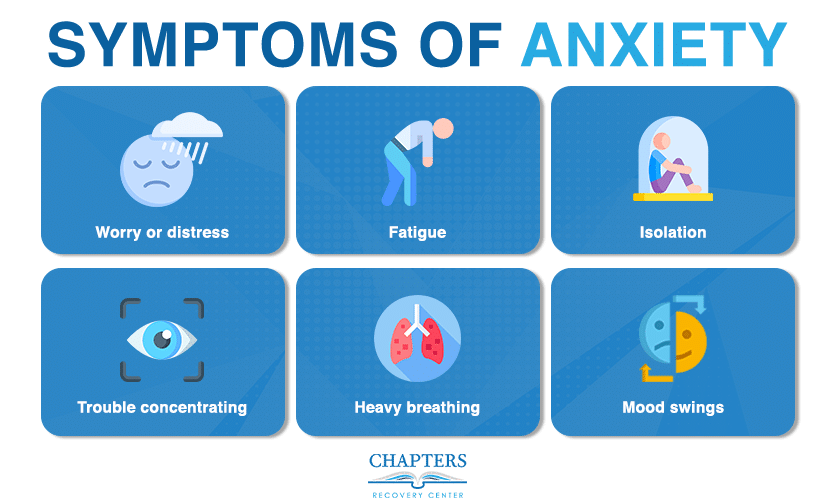With the increasing rates of trauma and post-traumatic stress disorder today, it is important for all Americans to be aware of their impact. Research shows that at some point in life, about 6% of all adults in the United States will have PTSD. Among the adult population in the country, PTSD currently affects about 3.6% of people. PTSD is more common among women than men. Approximately 37% of people who have PTSD suffer from severe symptoms.
Trauma is also a significant struggle for many. Research shows that about 70% of American adults have experienced some form of trauma during their lives. Trauma is a risk factor for developing substance abuse and mental health disorders. Children who witness traumatic experiences of their parents are also more likely to develop PTSD.
About 33% of such children will develop PTSD as a result of abuse or violence they see. It is important to understand PTSD vs trauma and treatment options. At Chapters Recovery Center in Danvers, Massachusetts, we specialize in managing various conditions through evidence-based treatments. We give people the proper resources to find recovery and maintain long-term sobriety.
Jump to Section
ToggleUnderstanding PTSD vs Trauma
Some people may use these terms interchangeably. Although both trauma and PTSD involve trauma, they are not synonymous.
What Is Trauma?
According to the American Psychological Association, trauma is an emotional response to a traumatic event. For example, dealing with a natural disaster or being involved in a vehicle accident may be a traumatic experience. Some traumatic experiences may be a one-time event or a repeated trauma. For instance, rape and physical abuse can be ongoing or one-time experiences. However, whether they happen once or multiple times, the experiences can create similar effects.
Trauma is what happens during or after a stressful event or series of events. People who experience trauma may feel fearful, anxious, and nauseous. They may also have headaches, pain, and other physiological symptoms. While some people recover and move forward on their own, others do not. With professional treatment, people can learn to cope, manage their emotions and move forward.
What Is PTSD?
PTSD is what occurs when people cannot move on after a traumatic experience. They may have experienced one or more traumatic events, and the effects show in several ways. A common effect of PTSD is persistent and intrusive thoughts or feelings about the traumatic experience. They linger long after the threat is gone. People with PTSD often have nightmares, flashbacks, and mood swings. There may also be physical pain or gastrointestinal problems.
As a result of a traumatic experience, a person may avoid places or things associated with the event. Some are also easily startled and upset by loud noises. PTSD can negatively affect mental, physical, and spiritual well-being. In the past, PTSD was commonly associated with soldiers who returned from war and experienced traumatic events. However, PTSD can happen as a result of anything from a car accident to bullying.
What Is the Difference Between Trauma and PTSD?
It is important to understand the key difference between trauma and PTSD. Time is the element that differentiates the two. With trauma, there are short-term effects during the event or its aftermath. For example, imagine that someone is in a car accident. Although the person survives and receives treatment, constant pain or a new disability may cause trauma. With PTSD, traumatic experiences eventually lead to the persistent thoughts and effects discussed earlier. Those may last weeks, months, or even years. PTSD involves a high level of ongoing distress and reduced quality of life.
Can You Have Trauma but Not PTSD?
People can experience trauma and not develop PTSD. Some people process the trauma and can move forward. After experiencing something traumatic, it helps to seek counseling to reduce the risks of developing PTSD. While some people may not feel like they need counseling, the effects of trauma can appear later as well. Talk therapy can help by giving people the opportunity to recount the event and their feelings.
When Does Trauma Become PTSD?
When people are unable to process trauma in their mind or body, it can turn into PTSD. According to some studies, avoidance behavior is a risk factor for developing PTSD. Avoidance usually involves trying not to think about the traumatic experience. People often use the example of telling someone to get back on a horse soon after falling off. It is common for people who fall off horses to fear riding again if they avoid horses, and their fears often became amplified over time as that avoidance continues.
If intrusive thoughts, feelings, or flashbacks linger or develop over time, trauma turns into PTSD. To be considered PTSD, the effects must last for more than a month. Another qualifying factor is that the symptoms must not come from medication. With some types of pharmaceuticals, side effects can be similar to some symptoms of PTSD.
The length of time it takes for PTSD to develop varies. In many cases, symptoms appear within a few months of the event. However, they can sometimes emerge much later. With treatment, some people can see significant improvements within months. For others, it may take a year or longer. Co-occurring disorders like depression or schizophrenia can also affect how long it takes for treatment to help.
Treatment for PTSD and Trauma
Treatment approaches may be similar for PTSD and trauma. However, treatment for PTSD may last longer or be more intensive. Depending on the individual’s needs and the type of trauma, there are several approaches that professionals may use.
Therapy
People who experienced trauma recently or in the past usually seek trauma-focused therapy. Treatment for dual diagnoses heavily involves psychotherapy. These are some common types of therapies used.
Cognitive-Behavioral Therapy (CBT)
Cognitive-behavioral therapy is a popular approach in trauma and PTSD therapy. It is especially critical for PTSD and is one of the most effective treatments for it. CBT is an approach that helps people identify thinking patterns, behaviors, or triggers. They also learn how to change behaviors or manage triggers. There are several variations of CBT that professionals use. One type of CBT for PTSD is cognitive processing therapy, which involves reevaluation. People learn to change inaccurate thought patterns that prevent them from moving forward and recovering.
Exposure Therapy
With this CBT-based approach, a therapist helps a person relive the traumatic experience or multiple events in a safe environment. The purpose is to help the person face fears and eventually reduce them through continued exposure. It may involve visits to the place where the event occurred. It may involve visual recreation of a scenario or even virtual reality devices. For PTSD patients, there is another variation that involves prolonged exposure. In this form of therapy, people gradually approach their traumatic memories. Also, they learn to stop avoiding certain reminders or triggers.
Eye Movement Desensitization and Reprocessing Therapy (EMDR)
With this approach, a patient recounts traumatic experiences while a therapist directs eye movements. Studies have shown that this approach is effective for treating PTSD. The purpose of the therapy is to help people integrate and process traumatic memories.
Somatic Therapies
There are several somatic approaches that some therapists use to help people reprocess trauma. They involve both the body and mind. For example, using body techniques and psychotherapy, a therapist can help a patient convert trauma into strength. There are also touch therapy and pressure therapy approaches that combine psychological elements.
Medications
There are several types of medications that medical professionals can prescribe if needed. They may be used temporarily for people who are trying to recover from trauma or PTSD. However, some people with other co-occurring disorders may have an ongoing need for medication to manage symptoms. In addition to medications that help reduce unpleasant psychological symptoms, there are options for other related issues. For example, a doctor can prescribe medications to help with digestive problems or chronic headaches.
Dual Diagnosis Treatment
About 80% of people with PTSD have another mental health issue. Dual diagnosis treatment involves treating multiple disorders at one time. Without treating all issues, one may exacerbate another. For example, a person with PTSD and a substance use disorder may use the substance to relieve symptoms of PTSD. Not receiving treatment for both may result in the person relapsing. Today, about 46% of people with PTSD have a SUD. Fortunately, many addiction treatment centers offer dual diagnosis treatment for SUDs and other co-occurring mental health disorders.
Holistic Treatments
Holistic treatments are supportive of whole-body healing. They may come in many forms. For instance, there may be programs for mindfulness, meditation, massage, nutrition, exercise, music, or art. Addiction treatment facilities that treat co-occurring disorders often provide several holistic treatments.
Find Help for PTSD or Trauma at Chapters Recovery in Danvers
If you or a loved one in Massachusetts is struggling with trauma or PTSD and substance use, Chapters Recovery Center can help. It is not your fault if you cannot move past a traumatic experience on your own. Most people need professional help and support, and we are sensitive to your unique needs.
We have inpatient care and several outpatient-based programs. We offer holistic therapy and dual diagnosis treatment to provide comprehensive, in-depth care and whole-body healing. Also, we offer resources for interventions, sober living, aftercare, and detox. Our compassionate and experienced team is here to help you discover the benefits of recovery. To learn more about treatment for PTSD vs trauma, please contact us.
References
https://www.ptsd.va.gov/understand/common/common_adults.asp
https://namica.org/illnesses/ptsd/
https://www.thenationalcouncil.org/wp-content/uploads/2022/08/Trauma-infographic.pdf
https://adaa.org/learn-from-us/from-the-experts/blog-posts/consumer/how-prevent-trauma-becoming-ptsd
https://www.nimh.nih.gov/health/publications/post-traumatic-stress-disorder-ptsd
https://adaa.org/understanding-anxiety/posttraumatic-stress-disorder-ptsd/treatment-facts
https://www.ptsd.va.gov/professional/treat/cooccurring/index.asp
https://bmcpsychiatry.biomedcentral.com/articles/10.1186/s12888-021-03366-0









